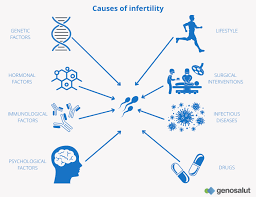High prolactin levels, or hyperprolactinemia, can significantly impact both men and women. This condition results from an overproduction of prolactin, a hormone primarily responsible for milk production in females after childbirth. However, prolactin is present in both sexes, and an imbalance can lead to various symptoms and health issues. Cabergoline, an effective treatment, is often used to regulate prolactin levels. In this article, we explore the causes and symptoms of high prolactin levels, the impact of these imbalances on health, and how cabergoline (particularly at 0.5 mg and 0.25 mg doses) is used to treat the condition.
Understanding Prolactin and Its Role
Prolactin is a hormone produced by the pituitary gland, located at the base of the brain. In women, prolactin plays a critical role in regulating breast milk production after childbirth. Prolactin levels are typically elevated during pregnancy and breastfeeding but return to normal after lactation ceases.
In men and non-pregnant women, prolactin levels are usually low. However, various factors can trigger an abnormal increase in prolactin levels, leading to a medical condition called hyperprolactinemia.
Causes of High Prolactin Levels
High prolactin levels can result from several causes, ranging from benign tumors to medications and hormonal imbalances. Common causes include:
- Pituitary Tumors (Prolactinomas): A prolactinoma is a benign tumor of the pituitary gland that secretes prolactin. This is the most common cause of high prolactin levels. The tumor can range in size, and larger tumors tend to cause more pronounced symptoms due to pressure on nearby structures, such as the optic nerves.
- Medications: Certain medications can increase prolactin levels as a side effect. These include antipsychotics (e.g., risperidone), antidepressants (especially selective serotonin reuptake inhibitors), and antihypertensives (e.g., verapamil). These drugs affect dopamine levels, which in turn regulate prolactin production.
- Hypothyroidism: An underactive thyroid (hypothyroidism) can lead to elevated prolactin levels. This is because low thyroid hormone levels can disrupt the regulation of prolactin by increasing the secretion of thyrotropin-releasing hormone (TRH), which stimulates prolactin production.
- Chest Wall Injury or Surgery: Injury to the chest wall, such as a trauma or surgery, can stimulate prolactin secretion. The nerves in the chest wall can send signals to the brain that increase prolactin production.
- Pregnancy and Breastfeeding: As previously mentioned, prolactin levels naturally rise during pregnancy and breastfeeding to support milk production. Elevated prolactin outside of these periods can indicate an underlying issue.
- Other Medical Conditions: Conditions such as chronic kidney disease, cirrhosis, and stress can also contribute to elevated prolactin levels.
Symptoms of High Prolactin Levels
Hyperprolactinemia can cause a range of symptoms, and these may vary depending on the underlying cause and whether the individual is male or female. Common symptoms include:
- For Women:
- Irregular or Absent Menstrual Cycles (Amenorrhea): High prolactin levels can interfere with the normal menstrual cycle, leading to irregular or missed periods.
- Infertility: Elevated prolactin can disrupt ovulation, making it difficult to conceive.
- Galactorrhea (Unexpected Milk Production): This is the most distinctive symptom, characterized by milk secretion from the breasts not related to childbirth or breastfeeding.
- Decreased Libido: High prolactin can lower estrogen levels, leading to reduced sexual desire.
- For Men:
- Erectile Dysfunction (ED): Elevated prolactin can affect testosterone levels, leading to difficulties achieving or maintaining an erection.
- Decreased Libido: High prolactin levels can also lower sexual drive in men.
- Infertility: Just as in women, prolactin imbalances can interfere with sperm production, leading to difficulty in conceiving.
- Gynecomastia: Men with high prolactin levels may experience the development of breast tissue.
- Both Sexes:
- Headaches: Larger prolactin-producing tumors can cause headaches due to pressure on the brain and nearby structures.
- Vision Problems: If a prolactinoma grows large enough, it can press on the optic nerves, leading to visual disturbances.
Diagnosing High Prolactin Levels
If high prolactin is suspected, a blood test will typically be conducted to measure the levels of prolactin in the bloodstream. If the levels are elevated, further tests are required to determine the underlying cause. These tests may include:
- Magnetic Resonance Imaging (MRI) of the Brain: This is used to detect the presence of pituitary tumors (prolactinomas).
- Thyroid Function Tests: Since hypothyroidism can cause elevated prolactin levels, thyroid function is often assessed.
- Liver and Kidney Function Tests: These tests help to rule out other conditions that may be contributing to the elevated prolactin.
Treatment of High Prolactin Levels
The treatment approach for high prolactin levels depends on the underlying cause. In many cases, treatment is aimed at normalizing prolactin levels and managing symptoms.
- Medications:
- Dopamine Agonists: Dopamine plays a key role in regulating prolactin levels. Medications that mimic dopamine (dopamine agonists) are the most effective treatment for high prolactin levels. The two most commonly used dopamine agonists are cabergoline and bromocriptine.
- Surgery:
- If a pituitary tumor (prolactinoma) is the cause and the tumor is large or causing significant symptoms, surgery may be necessary to remove the tumor.
- Radiation Therapy:
- For persistent tumors that do not respond to medication or surgery, radiation therapy may be an option.
Cabergoline as a Treatment for High Prolactin
Cabergoline is a dopamine agonist that is often prescribed to treat high prolactin levels, especially in the case of prolactinomas. It works by stimulating dopamine receptors in the brain, which in turn inhibits the secretion of prolactin from the pituitary gland. This reduces prolactin levels and helps alleviate associated symptoms.
Cabergoline is preferred over bromocriptine due to its higher efficacy and fewer side effects, making it a more convenient option for long-term management of prolactin imbalances. The typical doses are cabergoline 0.5 mg and cabergoline 0.25 mg, though the dosage may be adjusted based on the patient’s response and the severity of the condition.
- Cabergoline 0.5 mg: This is often the starting dose for many patients. It is typically taken twice a week, though the frequency and dosage may be adjusted based on individual response. This dose is effective for most individuals and is well tolerated.
- Cabergoline 0.25 mg: For patients who experience side effects with higher doses or those who are more sensitive to the medication, a lower dose of 0.25 mg may be prescribed. This dose is also effective in reducing prolactin levels, though it may take slightly longer to achieve the desired effect.
Advantages of Cabergoline:
- Better Tolerability: Compared to other dopamine agonists, cabergoline has a lower incidence of side effects such as nausea, dizziness, and hypotension.
- Long Half-Life: Cabergoline has a long half-life, meaning it stays in the body longer, allowing for less frequent dosing.
- Effectiveness: Studies show that Cabergoline is highly effective in normalizing prolactin levels in patients with prolactinomas.
Possible Side Effects of Cabergoline: While cabergoline is generally well tolerated, it may cause some side effects. These include:
- Nausea
- Headache
- Dizziness
- Fatigue
- Low blood pressure (especially when standing)
It is important to note that cabergoline should be taken under the supervision of a healthcare professional, as it can interact with other medications and may not be suitable for individuals with certain medical conditions.
Conclusion
High prolactin levels, or hyperprolactinemia, can lead to a range of health issues for both men and women, including infertility, decreased libido, and irregular menstrual cycles. The treatment of choice for many individuals with elevated prolactin is cabergoline, a dopamine agonist that effectively reduces prolactin levels and alleviates symptoms. Both cabergoline 0.5 mg and 0.25 mg are commonly used, with the dose depending on the severity of the condition and the patient’s response.
By properly diagnosing and treating high prolactin levels, individuals can regain normal hormonal balance and improve their overall quality of life. It is crucial to work closely with a healthcare provider to determine the best course of action, monitor treatment progress, and address any potential side effects.




